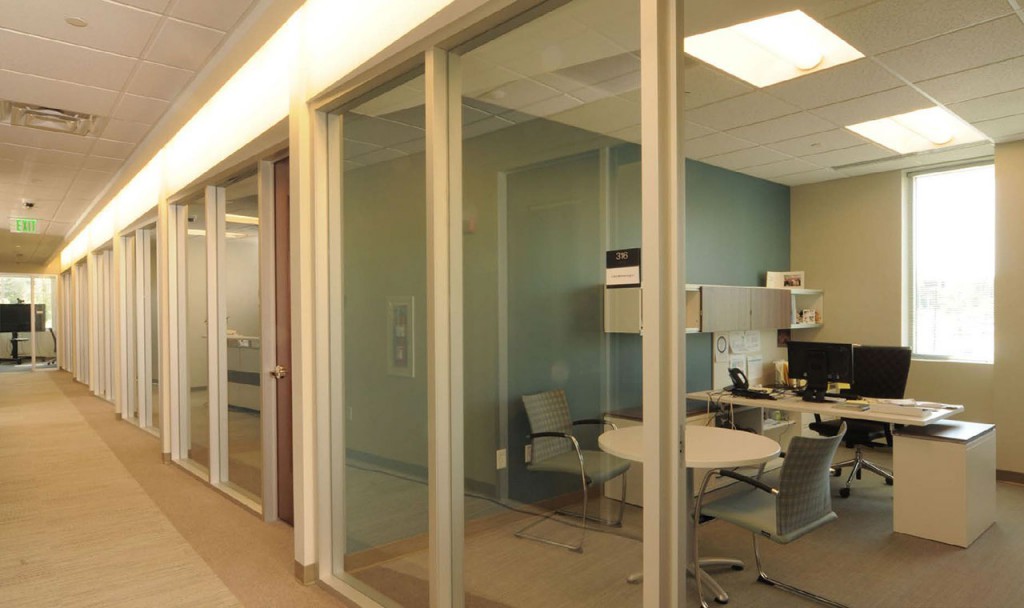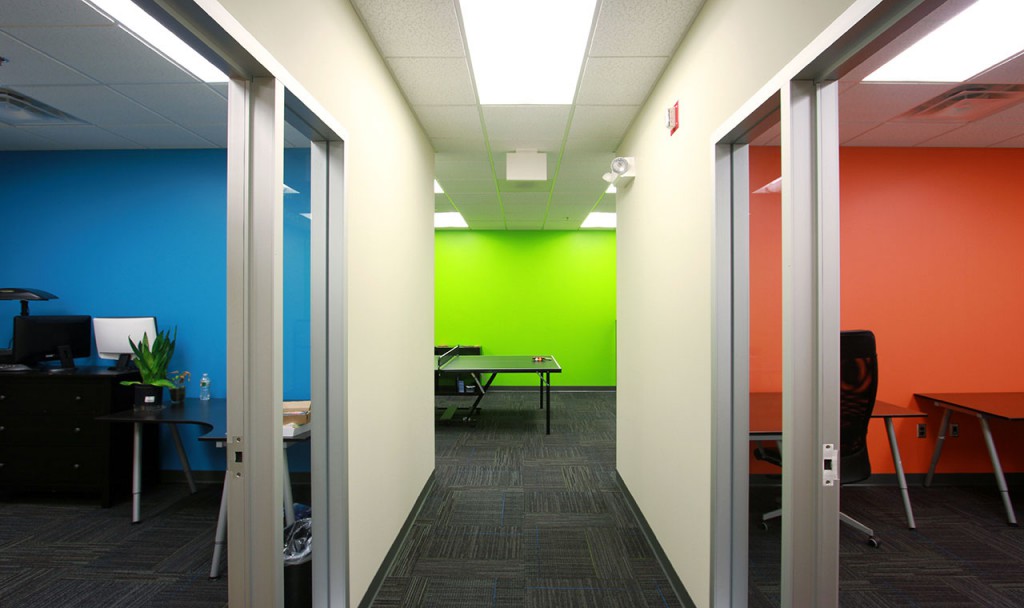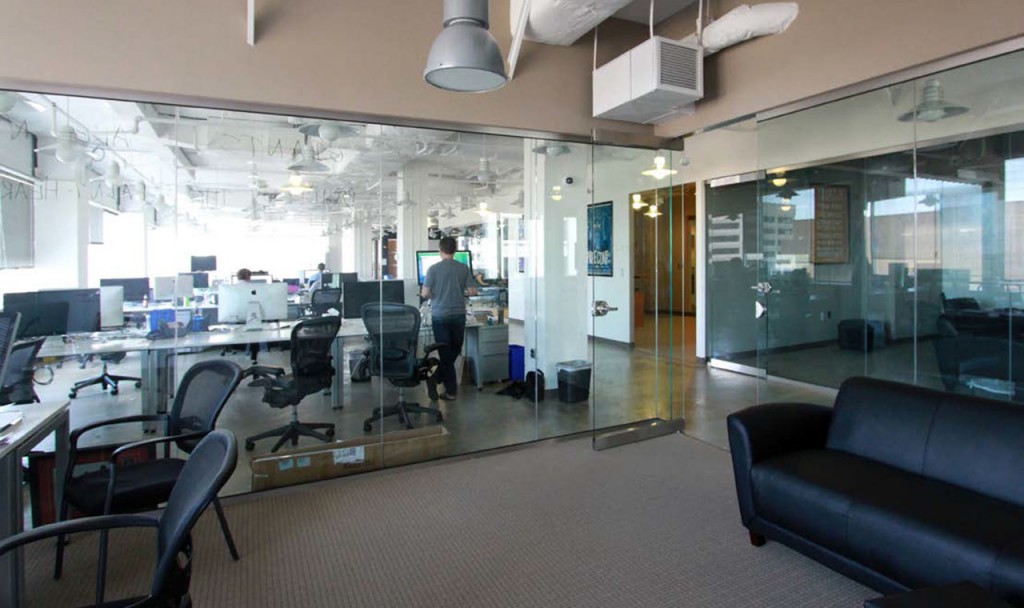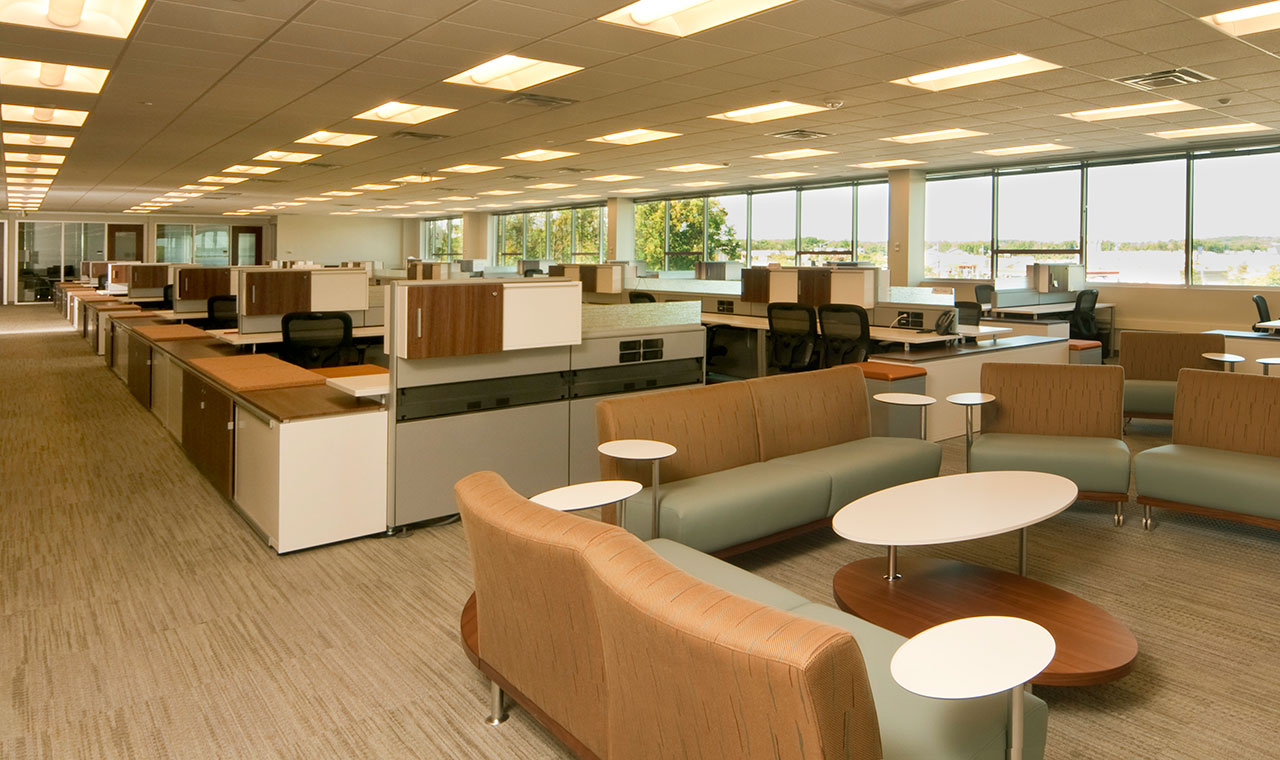October 20, 2014
Workplace Trends: Open Office vs. Traditional Office Plans
Arium designed a flexible open plan adjacent to more traditional private offices for this client. Systems furniture that provides flexibility and user control are critical in these types of arrangements.
The media has seen a recent flurry of discussion and articles focusing on the validity and broad application of open office plans. Over the past year, Forbes, Business Week, and the Huffington Post have all published criticisms, but the most damning research on open-office design is referenced in the New Yorker article “The Open-Office Trap”:
“In 2011, the organizational psychologist Matthew Davis reviewed more than a hundred studies about office environments. He found that, though open offices often fostered a symbolic sense of organizational mission, making employees feel like part of a more laid-back, innovative enterprise, they were damaging to the workers’ attention spans, productivity, creative thinking, and satisfaction. Compared with standard offices, employees experienced more uncontrolled interactions, higher levels of stress, and lower levels of concentration and motivation.”
Higher levels of stress and lower productivity… sounds like the death knell for the open-office space, right? Not so fast. In these days of quick information, there’s always a backlash to any backlash, and a recent article by Fast Company attempts to provide context to some of the criticisms. While individual productivity may suffer in an open office, response times were twice as fast, author David Craig argues, and the problems that were fixed with greater collaboration were more significant than problems traditionally solved by individuals. More importantly, however, Craig argues that open vs. closed doesn’t have to be an either/or proposition:
“The bigger flaw, though, in recent criticisms of open workplaces is the underlying idea that there’s only one choice: open or enclosed. Work is invariably a combination of individual work, collaboration, coordination, creativity, and other things, all of which can take a variety of forms, sometimes in just one person in one day. As research done by CannonDesign with 14 organizations over the past year has shown, the average employee does want fewer distractions, but they also want 35% more frequent interactions within their teams; they want more energy and buzz in the workplace than less, but they also want the flexibility to escape to a quiet place from time to time. What they definitely don’t want is one space that’s just open or just enclosed.”
Indeed, this mix of open and closed space seems to be preferred by many of today’s most innovative companies. When Arium started working with the tech firm Social Growth Technologies, we conducted initial discussions to gather information about their space needs, and then presented them with multiple design ideas. Although collaboration was a key requirement, Social Growth had real concerns about acoustical distractions. In fact, like many of our clients, it was determined that each of their working groups had very unique combinations of collaboration and privacy needs.

Many clients require both transparency and acoustical privacy. Arium utilized a mix of hard walls and aluminum frame systems to achieve both for this client.
“The most effective spaces bring people together and remove barriers while also providing sufficient space that people don’t fear being overheard. In addition, they reinforce permission to convene and speak freely.”
— “Who Moved My Cube”, Harvard Business Review
For Social Growth, the solution turned out to be flexible spaces with varied levels of privacy. Software development teams preferred to have 2-3 person glass offices that fostered employee interaction while avoiding the disruptive potential of an entirely open-office floor plate. Other groups with less demand for acoustical privacy enjoyed open-plan office arrangements and the large swaths of daylight that are associated with them. Additional meeting and break rooms were distributed along circulation corridors to provide ample opportunities for spontaneous collaboration. As a general rule, employees were provided opportunities to vary their work environment as their daily tasks demanded it. This variation and flexibility in workspace is one emerging trend that will have staying power.
A proposed space plan cannot be simple in its assumptions about human interaction; there are multiple elements at play. Specifically, the Harvard Business Review article “Who Moved My Cube,” attributes greater interaction to three factors: proximity, privacy, and permission.
As we continue to balance employee productivity/well-being with efficient space plans, responsible designers will serve their clients best by considering the nuances of human nature. Rather than broadly applying open-office trends we can listen to our client’s unique and varying needs and provide flexible plans that respond to evolving workplace dynamics.

High tech firms often need to collaborate in small teams, but also need acoustical privacy for extended periods of individual work. For this client, 2-4 person offices with ample amounts of glass and direct sight lines proved to be the perfect solution.

Providing transparency in existing buildings can be very rewarding to the right type of client. Natural light and open workstations can make for a very vibrant atmosphere.

